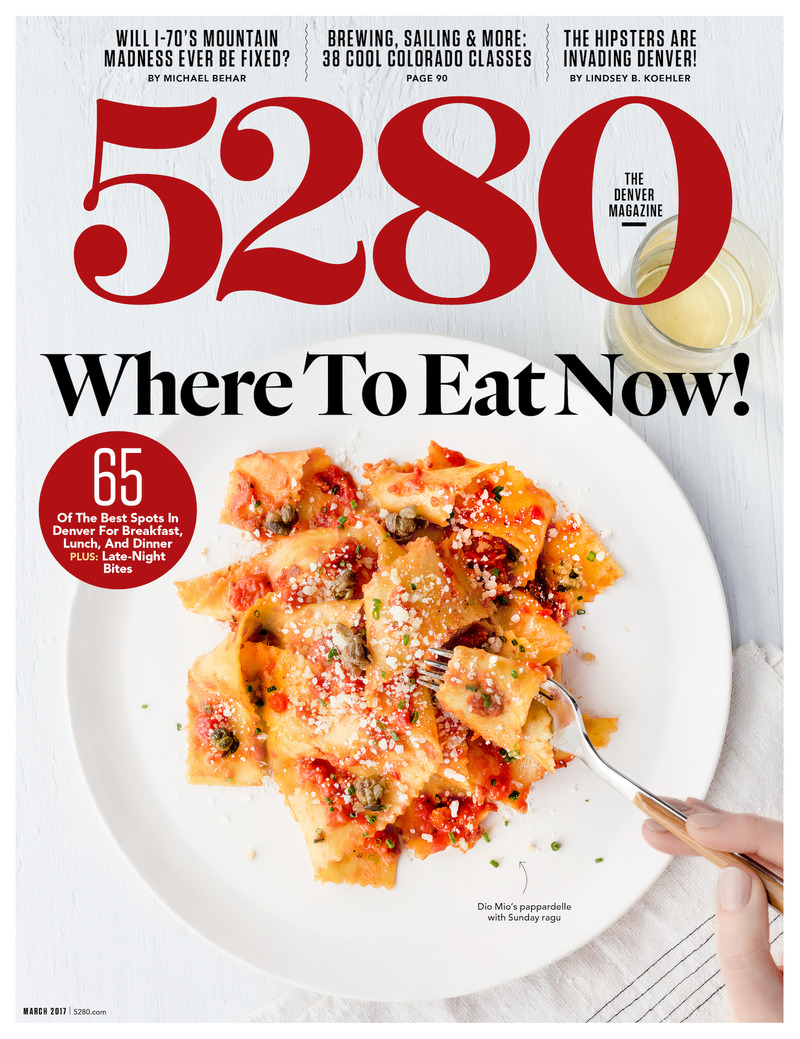The Local newsletter is your free, daily guide to life in Colorado. For locals, by locals.
Carbon Knife Co. is letting home cooks in on a secret Denver’s chefs have long known: A top-grade, super-sharp knife is a game changer, making kitchen prep quicker, easier, and safer. Knife geeks (and former Rioja cooks) Craig Field and Tina Chon opened the store—which also stocks cookbooks and kitchen equipment—four months ago to fill a void. Not only were there few options for buying knives in the city, but shopping online often meant weeks of waiting and possibly a disappointing outcome if the blade didn’t feel right. That’s not the case at Carbon, where the experience is hands-on (you can hold the knives to ensure a comfortable fit), the service is informed, and the selection is unparalleled in Denver. While the cost of a nice blade might seem steep (Carbon’s range from $50 to $500-plus), consider Chon’s rationale: “You only need a couple of knives,” she says, “and buying one or two good ones is often cheaper than buying an entire lower-quality set.”
EAST VERSUS WEST
Japanese knives have thinner edges and are lighter than Western-style versions, giving the cook a bit more control. But the weight of a Western knife (and the familiar handle shape) can be more comfortable for breaking down chickens or thick-skinned squashes. For those who want the best of both sides of the world, Carbon sells hybrids—such as the Fujiwara Maboroshi—with Japanese-style blades and Western handles.
PARE DOWN
“There’s a knife for every purpose: meat, bread, vegetables,” Chon says. But that doesn’t mean you must amass a top-chef-worthy collection. Just two—a versatile, six-inch utility knife and a seven- to eight-inch chef’s knife—will handle most any kitchen task.
KNIFE CARE 101
“Moisture is knives’ biggest enemy,” Chon says. Always hand-wash blades in warm, soapy water (no dishwashers allowed!) and dry thoroughly. Whether you store the knife on a magnetic strip, in a drawer, or in a wood block, keeping it free of moisture—and thus rust—is key to extending its life.
TRUE AS STEEL
Consider the pros and cons of carbon steel and stainless steel knives: “Carbon knives are sharper,” Chon says. However, blades made from the store’s namesake material require special care (exposure to acidic ingredients or failure to clean them can invite rust). For most home cooks, easy-to-maintain stainless steel—which is still plenty sharp—may be best.
STAY SHARP
“If you use your knife a few times a week,” Chon says, “you’ll want to get it sharpened every other month.” You’ll notice when your knife needs professional attention: Cutting will require more force, which is often how injuries occur. Luckily, when you buy a knife at Carbon, your first sharpening is free; after that, expect to pay $1.25 to $2.50 per inch.
Visit Carbon Knife Co. at 3264 Larimer St., 720-292-4277









